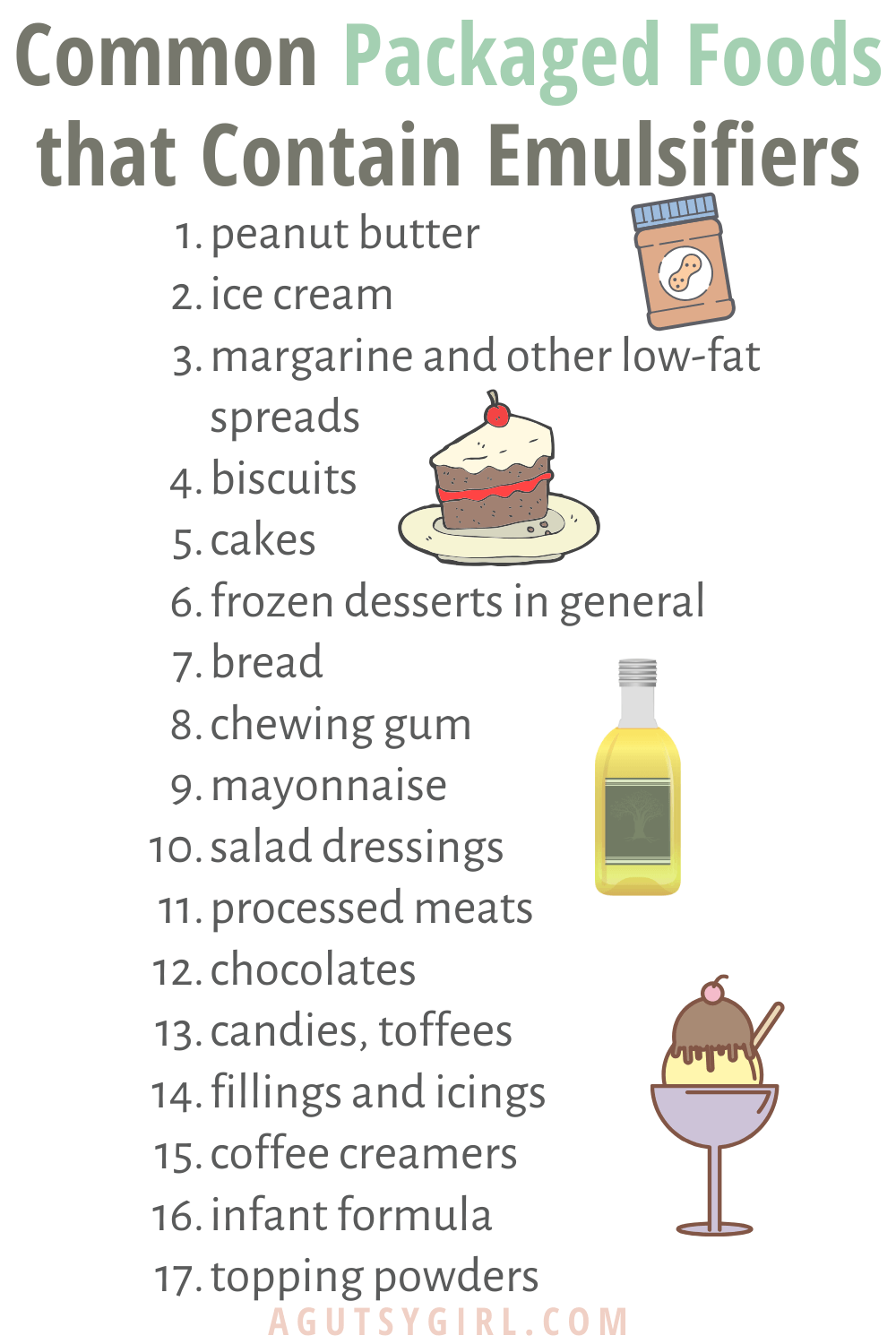The Function of Emulsifier In Food in Preventing Spoilage
Everything about the Function of an Emulsifier in Food and Its Significance in Modern Food
Emulsifiers are essential in contemporary food, promoting the mix of immiscible liquids like oil and water. Their capacity to support mixtures boosts the structure and flavor of numerous food. From salad dressings to baked products, emulsifiers play a considerable function in both commercial and home food preparation. Yet, the scientific research behind their feature and the future innovations in their usage stay less explored. Emulsifier In Food. What a lot more could be unearthed regarding these important cooking agents?
Recognizing Emulsification: The Science Behind the Refine
Although emulsification may appear like a basic cooking method, it involves complicated clinical principles that are crucial for producing stable blends of immiscible fluids, such as oil and water. At the heart of this procedure lies the concept of surface stress, which protects against the two liquids from mixing normally. Emulsifiers, materials that reduce surface tension, play an essential duty in assisting in the mix of these liquids. They possess both hydrophilic (water-attracting) and hydrophobic (water-repelling) residential or commercial properties, allowing them to anchor themselves at the interface between oil and water.
When an emulsifier is introduced and the blend is perturbed, it creates a protective barrier around dispersed droplets of one liquid within the other, stabilizing the mix. This action not only improves structure and mouthfeel in foodstuff however likewise adds to their aesthetic allure. Emulsifier In Food. Understanding the science behind emulsification is essential in modern-day cuisine, permitting chefs to create a range of sauces, dressings, and emulsified dishes
Typical Kinds Of Emulsifiers Used in Food
Emulsifiers are crucial active ingredients in the food sector, playing a vital role in stabilizing combinations of oil and water. Different types of emulsifiers are commonly made use of, each with special buildings fit for different applications. Lecithin, stemmed from soybeans or egg yolks, is among one of the most prominent natural emulsifiers, usually discovered in dressings and chocolates. Mono- and diglycerides, which are stemmed from glycerol and fatty acids, are extensively utilized in baked goods and margarine to improve texture and expand rack life. Another usual emulsifier is polysorbate 80, preferred for its capability to enhance the consistency of gelato and sauces. In addition, xanthan gum and guar gum tissue serve as thickening representatives that additionally contribute to emulsification in gluten-free items. These emulsifiers are integral to producing a stable, palatable item in modern food formulas, making certain a pleasurable sensory experience for customers.
The Role of Emulsifiers in Different Food Products
A selection of foodstuff depend on emulsifiers to achieve wanted textures and security. These substances assist in the mixing of immiscible fluids, such as oil and water, which is vital in lots of processed foods. In salad dressings, emulsifiers help preserve a constant combination, preventing separation and improving rack life. In baked goods, they contribute to a consistent crumb framework and moisture retention, boosting total high quality.
Emulsifiers additionally play a significant role in dairy products, such as ice cream and yogurt, where they stabilize fat globules, making sure a smooth mouthfeel. In addition, in spices and sauces, they enhance viscosity and improve spreadability. This performance is essential in the manufacturing of delicious chocolates, margarine, and mayo, where a natural product is required. Generally, using emulsifiers in different foodstuff is essential to modern food production, boosting security and uniformity across a variety of items.
How Emulsifiers Enhance Texture and Taste

When integrated into food products, emulsifiers considerably improve both texture and flavor, producing a more satisfying eating experience. These materials help with the mixing of components that generally do not blend well, such as oil and water, leading to a smoother, creamier uniformity. This not only enhances mouthfeel however also permits flavors to disperse equally throughout the item, magnifying the more overall preference.

Emulsifiers in Home Food Preparation: Tips and Techniques
How can home chefs successfully use emulsifiers to enhance their dishes? Emulsifiers play a necessary role in achieving desirable textures and flavors in homemade dishes. Using egg yolks in mayonnaise or hollandaise sauce allows for a stable solution, combining oil and water successfully. Home chefs can likewise explore mustard, which serves as an emulsifier in vinaigrettes, guaranteeing a smooth consistency.
In baking, including lecithin, located in egg yolks or soy, can enhance dough stability and moisture retention. In addition, making use of business emulsifiers like xanthan periodontal or guar gum can aid enlarge sauces and dressings while preserving a creamy mouthfeel.
When developing gelato or whipped toppings, emulsifiers can protect against ice crystal development, leading to a smoother appearance. By grasping these techniques, home chefs can substantially raise their culinary developments, offering delightful and regular meals that showcase the power of emulsification.
The Future of Emulsifiers in Culinary Development
As the culinary globe remains to advance, the function of emulsifiers is positioned to end up being diverse and significantly innovative. Breakthroughs in food science are bring about the development you could try this out of brand-new emulsifying agents obtained from all-natural sources, which provide to health-conscious consumers and improve the sensory high qualities of dishes. Innovations such as plant-based emulsifiers are gaining grip, enabling cooks to create vegan and allergen-free choices without endangering texture or flavor.
Furthermore, making use of emulsifiers in molecular gastronomy is expanding, allowing cooks to experiment with distinct structures and discussions that captivate diners. As sustainability ends up being a concern, the future might see a change towards green emulsifiers that reduce environmental effect.
Inevitably, emulsifiers will remain to play a crucial role in culinary advancement, linking the gap between tradition and modernity, and enabling cooks to push the borders of creativity in their kitchen areas.
Frequently Asked Concerns

Are Emulsifiers Safe for People With Allergic reactions?
Emulsifiers can be secure for people with allergies, depending on their specific level of sensitivities. Specific emulsifiers, derived from allergenic sources like soy or eggs, might activate reactions, necessitating mindful active ingredient examination and consultation with medical care experts.
Just How Do Emulsifiers Impact Food Rack Life?
Emulsifiers improve food rack life by supporting mixtures, stopping separation, and minimizing microbial growth. This security aids preserve appearance and flavor gradually, allowing items to remain enticing and safe for usage longer than without emulsifiers.
Can Emulsifiers Be Derived From Natural Resources?
Yes, emulsifiers can be originated from all-natural sources such as plants, eggs, and milk items (Emulsifier In Food). These natural emulsifiers assist stabilize blends, enhancing appearance and consistency in different food applications while being chosen for health-conscious customers
What Are the Environmental Influences of Emulsifier Production?
The environmental impacts of emulsifier production include resource exhaustion, environment devastation, and pollution from synthetic procedures. All-natural emulsifier sourcing can minimize some effects, however on the whole, commercial practices still position considerable eco-friendly challenges to environments worldwide.

Exist Vegan Emulsifiers Available out there?
Yes, there are a number of vegan emulsifiers offered on the market, such as lecithin originated from soy or sunflower, guar gum, and xanthan gum tissue. These choices accommodate plant-based diet plans without compromising emulsifying homes.
Emulsifiers are vital ingredients in the food sector, playing a vital function in stabilizing combinations of oil and water. A range of food products count on emulsifiers to accomplish desired appearances and stability. When included into food items, emulsifiers substantially improve both texture and taste, creating an even more pleasurable consuming experience. Furthermore, emulsifiers can stabilize air pockets in whipped items like creams and mousses, leading to a light and airy texture. Emulsifiers boost food shelf life by stabilizing blends, avoiding splitting up, and minimizing microbial growth.